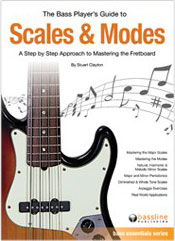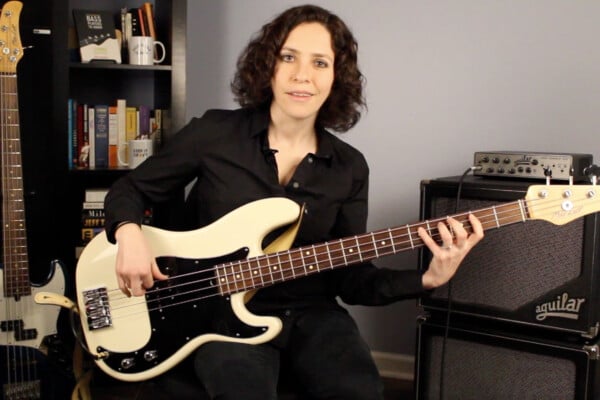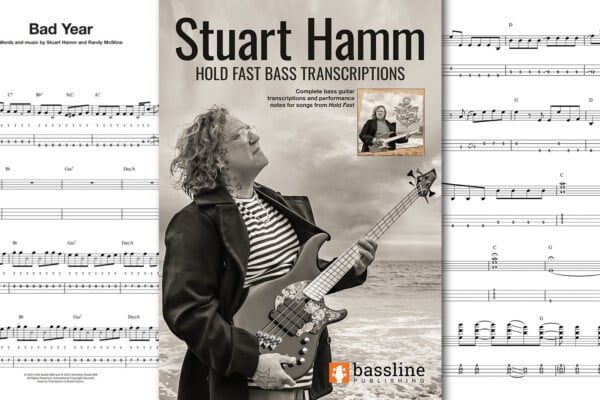The Bass Player’s Guide to Scales & Modes
 Stuart Clayton has released his latest bass method book, The Bass Player’s Guide to Scales & Modes, through his Bassline Publishing company.
Stuart Clayton has released his latest bass method book, The Bass Player’s Guide to Scales & Modes, through his Bassline Publishing company.
The Bass Player’s Guide to Scales & Modes is a thorough reference manual featuring all the scales, modes and arpeggios, from construction to recommended fretboard patterns.
“[This] is a book that I have written in response to teaching both privately and in music schools for the last five years,” Clayton shared with us. “Many books/schools/tutors teach scales as a series of fretboard patterns which the user then moves around the fingerboard in order to play in a different key. Unfortunately, this method results in large portions of the fingerboard going unused, and the student having no real understanding of the reason for using one particular scale or mode over another. The student is also unable to play the scale freely over the fingerboard as they are restricted to their pattern.”
“The way I was taught – and the way that I have always taught my students – is that you should understand the content of the scale, rather than learn a pattern. For example, if you know the content of the C major scale – all naturals, no accidentals – then assuming you know your fretboard, you should not need a pattern in order to play the scale over one, two or three octaves, on one string, two strings etc. Knowing the theory behind the scale helps the student put it to use in a more musical way, and apply it at the right time. This is the basis for this book.”
The first section of the book covers the C major and A natural minor scales in detail, also guiding the student through the rest of the keys using the circle of fifths. All scales are covered over two octaves, with alternate finger patterns encouraged. Additional exercises in this section cover learning the diatonic arpeggios that are derived from the major scale.
The second section of the book covers the major and minor pentatonic scales and their relationship to the major and minor scales. The blues scale is also covered here, and “real world” bass grooves are used to demonstrate the sound of each scale in use.
The third section of the book covers the modes of the major scale. Each has its own chapter, and is analyzed and compared the major/minor scales to highlight the differences. More bass grooves are used to illustrate the sound of each mode in context.
The fourth and final section covers the harmonic minor and melodic minor scales, and the modes and arpeggios that are derived from them. The diminished and whole tone scales are also covered here.
The book is presented in a way to make the information cumulative, with each chapter building on the concepts from the previous ones. Audio files for the bass grooves are available as well.
The Bass Player’s Guide to Scales & Modes Chapters:
- The C Major Scale
- The Two Octave C Major Scale
- The A Natural Minor Scale
- The Two Octave A Natural Minor Scale
- The Circle of Fifths
- Learning More Keys
- Arpeggios of the Major Scale
- The Major Pentatonic Scale
- The Minor Pentatonic Scale
- The Blues Scale
- The Dorian Mode
- The Phrygian Mode
- The Lydian Mode
- The Mixolydian Mode
- The Aeolian Mode
- The Locrian Mode
- The Harmonic Minor Scale
- Arpeggios of the Harmonic Minor Scale
- Modes of the Harmonic Minor Scale
- The Melodic Minor Scale
- Arpeggios of the Melodic Minor Scale
- Modes of the Melodic Minor Scale
- The Diminished Scales
- The Whole Tone Scale



